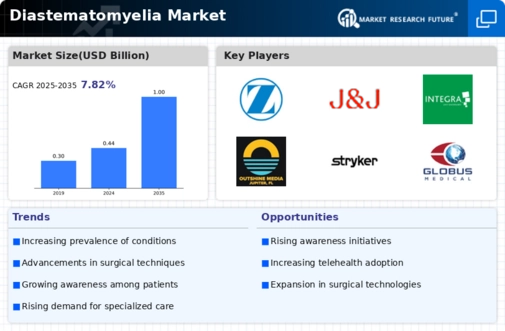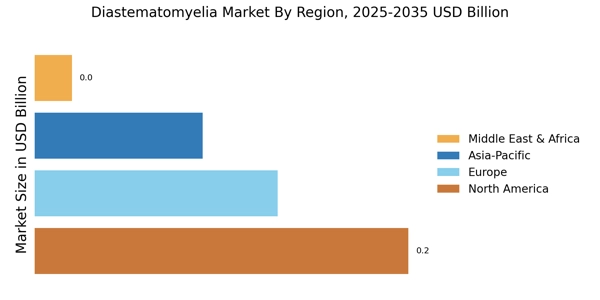Rising Demand for Pediatric Care
The rising demand for pediatric care is a significant factor impacting the Diastematomyelia Market. As awareness of congenital conditions increases, parents are more proactive in seeking specialized care for their children. This trend is particularly evident in the management of spinal disorders, where early intervention is crucial for optimal outcomes. The growing emphasis on pediatric healthcare has led to the establishment of specialized clinics and treatment centers focused on conditions like diastematomyelia. Consequently, this demand is driving the market for pediatric surgical interventions and rehabilitation services. The Diastematomyelia Market is likely to see sustained growth as healthcare providers adapt to meet the needs of this demographic, ensuring that children receive timely and effective treatment.
Advancements in Diagnostic Imaging
Advancements in diagnostic imaging technologies are significantly influencing the Diastematomyelia Market. Enhanced imaging modalities, such as MRI and CT scans, allow for more accurate and timely diagnosis of diastematomyelia. These technologies facilitate the identification of spinal anomalies that may have previously gone undetected, leading to earlier intervention and improved patient outcomes. The integration of advanced imaging techniques into clinical practice has resulted in a surge in diagnosed cases, thereby increasing the demand for specialized treatment options. As healthcare facilities continue to adopt these technologies, the Diastematomyelia Market is expected to expand, driven by the need for effective management strategies and surgical interventions tailored to individual patient needs.
Rising Incidence of Diastematomyelia
The increasing incidence of diastematomyelia is a notable driver in the Diastematomyelia Market. Recent studies indicate that the prevalence of this condition is rising, with estimates suggesting that it affects approximately 1 in 1,000 live births. This growing recognition of the condition has led to heightened demand for diagnostic and therapeutic options. As more cases are identified, healthcare providers are compelled to enhance their treatment protocols, thereby expanding the market for surgical interventions and supportive therapies. The rising incidence not only emphasizes the need for specialized care but also drives research and development efforts aimed at improving patient outcomes. Consequently, the Diastematomyelia Market is likely to experience growth as awareness and diagnosis improve, leading to increased treatment options and resources.
Increased Focus on Patient-Centric Care
The increased focus on patient-centric care is reshaping the landscape of the Diastematomyelia Market. Healthcare providers are increasingly prioritizing individualized treatment plans that consider the unique needs and preferences of patients. This shift towards a more holistic approach is fostering the development of tailored therapies and rehabilitation programs for individuals with diastematomyelia. As patient engagement and satisfaction become paramount, healthcare systems are investing in training and resources to enhance the quality of care. This trend is likely to drive innovation in treatment methodologies and improve overall patient outcomes. The Diastematomyelia Market is expected to benefit from this focus on patient-centric care, as it aligns with the broader movement towards personalized medicine.
Growing Investment in Research and Development
The growing investment in research and development within the Diastematomyelia Market is a critical driver of market expansion. Increased funding from both public and private sectors is facilitating innovative approaches to treatment and management of diastematomyelia. This investment is likely to lead to the development of novel surgical techniques, improved rehabilitation protocols, and enhanced patient care strategies. Furthermore, collaborations between academic institutions and healthcare organizations are fostering a deeper understanding of the condition, which may result in breakthroughs in treatment methodologies. As research continues to evolve, the Diastematomyelia Market stands to benefit from the introduction of new therapies and technologies that address the complexities of this condition.


















Leave a Comment